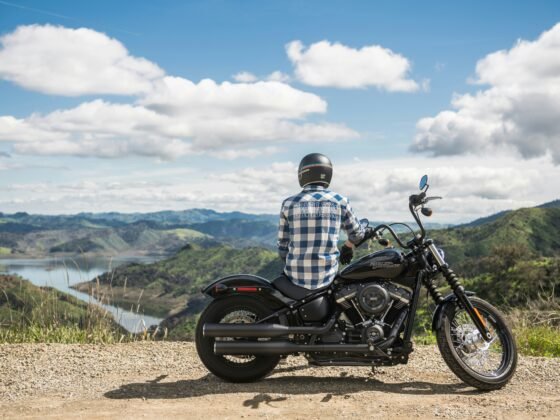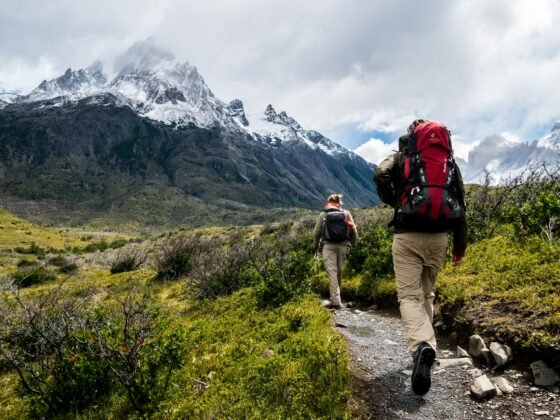Photo by Danka & Peter on Unsplash
Whether you’re looking for an engaging physical activity or are already a trail enthusiast, hiking offers multiple opportunities to enjoy nature at the same time as getting some exercise; day hikes, multiple-day backpacking, or thru-hiking to a new destination can all deliver a fantastic one-of-a-kind adventure! To get the most out of your hiking and relieve some stress while you’re at it, here are some essential tips to help maintain your vitality and enjoy your hikes from peak to peak!
Make a Plan
Putting together a plan before you embark on your adventure can make a massive difference when it comes to both on-the-trail-enjoyment and personal safety. Consider your fitness level when determining the trail you select and the length of your hike to help maintain peak vitality on the trail.
Be sure to check the weather, primarily so that you know how to dress appropriately for the elements, and pack the right gear. Then, study the route, its length, and how long you expect to be hiking. Finally, prepare an emergency plan; if an accident occurs, who will get help? Can you do so independently if needs be? Does the area benefit from cell service? Consider carrying a GPS satellite messaging device with you.
Trailside Nutrition
Photo by Maksim Shutov on Unsplash
Bring along enough food and water to easily last for the intended length of your hike; both are essential to survival, especially when unexpectedly finding yourself in adverse conditions. It’s also a good idea to pack calorie-dense food that isn’t immediately perishable; choose food that will fuel your body adequately during physical exertion.
Foods like dried fruit and nuts, trail mix, energy bars, freeze-dried meals, or jerky are all hiking trip favorites. Trail mixes and energy bars offer a quick energy source and a balance of healthy fats, carbohydrates, and proteins, while jerky is lightweight and protein-packed.
Smart Hydration Strategies
Water is essential for survival, even on a short hike. Dehydration is a significant risk for hikers, especially in warm weather. Maintaining a fluid balance throughout your hike should be a priority, as remaining hydrated is vital to keeping your energy levels up throughout the hike.
Pre-Hydrate
Drink generous amounts of water in the days leading up to your hike, especially if your planned hike is particularly strenuous.
Plan Hydration for Your Activity
Consider if you will be involved in moderate activity or greater exertion, as well as the climate and altitude you’re expecting; hot or humid weather can increase water needs. It’s important to remember that a cold climate may decrease your sense of thirst, but you will still need to hydrate to maintain energy levels.
Hydration System
Select your preferred hydration method, whether it be a bottle or water bladder, allowing you to sip without stopping or expending excess energy. Make it a point to drink small quantities of water regularly; do not wait until you experience thirst to start hydrating.
You need a backup source of hydration in case you run out of your primary water supply. Consider bringing along a water purification system if the area you are hiking in offers natural water sources; alternatively, you can bring extra water if it’s possible to increase your weight load. Avoid using natural water sources that have not been purified, as they may contain contaminants such as bacteria, pathogens, or parasites.
Electrolyte Replacement
Electrolyte replacement is recommended when hiking a considerable distance and/or in a hot climate. Replacement tablets or drinks that replenish essential elements like potassium, sodium, or magnesium lost during perspiration will contribute significantly to your sense of wellbeing along the trail; these minerals aid in maintaining fluid balance and muscle function among their many talents.
Hydration Monitoring
Monitor your urine color to evaluate hydration levels. Pale yellow to clear urine implies good hydration, while darker urine can indicate dehydration; other indications of dehydration include dizziness, headaches, and fatigue.
Infused Water for Enhanced Hydration
Water infused with fruit, vegetables, spices, or herbs is a great way to remain hydrated while on the trail; it’s also healthier than drinking sodas or sugary juices, which can contribute to dehydration. Something as simple as infused water is super refreshing and can contain essential vitamins and minerals that contribute to nourishment and depleted energy and vitality.
Pace and Rest
Photo by Amy Sibert on Unsplash
Hiking is an endurance sport, and no ‘right’ pace applies to everyone. Listen to your body and any pain in joints or muscles. Focus on breathing smoothly and steadily while moving, and select a pace that will permit you to hike comfortably for extended periods.
When pushing your body to the limit, fatigue will set in much faster. When hiking uphill, take frequent rests and a 30-second stop whenever needed. When stopping to rest, eat, or take a bathroom break, but try not to interrupt your hiking for more than 15 to 20 minutes, as this will avoid allowing your muscles to cool down entirely; muscles will then be able to rest but still be handle further hiking at a strong personal pace.
Gear Essentials
When preparing your gear, consider both functionality and the weight of the gear you bring; weatherproof, lightweight, durable gear is ideal. Select a backpack that is comfortable to wear, durable on the trail, and able to carry the gear you need to take.
Clothing
Textiles that are moisture-wicking can aid hikers in staying dry throughout their trek, thus ensuring increased comfort; layering clothing will also aid in maintaining a comfortable and healthy body temperature. Waterproof outer clothing and insulating mid-layer clothing are essential in weather-challenged locations. Remember to bring gloves, buffs, hats for the extremities, and a good pair of lightweight protective sunglasses; brimmed hats can also aid in protecting from you the sun.
Wear Appropriate Socks and Footgear
This may seem like a no-brainer but carefully consider your socks and footwear choice; especially when hiking long distances, you don’t want blisters to form. Selecting a good pair of hiking boots and socks can prevent excess moisture from developing and blistering. Good boots should provide traction, support, and protection.
Wool socks or socks made from water-resistant fibers are generally recommended to prevent excess moisture from irritating your skin. Also, carry blister dressings in your first aid kit; you may even want to wear blister dressings as a preventative measure. If you’re an athlete, make sure you have the right health coverage.
Know Your First Aid
While we’re on the subject of blisters, if you can take an introductory first aid course for hiking or outdoor activities, do so; at the least, brush up on the basics before venturing out. Be prepared to treat cuts, scrapes, and skin abrasions, and bring along a support bandage for an ankle twist.
Post-Hike Recovery
Gradually reduce your hiking speed; avoid just stopping, as slowing your pace will allow you to cool down slowly, and for your muscles to return to a relaxed resting condition.
Begin rehydrating as soon as possible. Even if you have correctly hydrated during the hike, you’ll still need some rehydration for muscle repair. Water and electrolyte solutions or tablets will aid with lowering blood pressure and rehydrating sufficiently following heavy sweating.
Keep Snacking
Rebuild your glycogen stores and improve your mood by eating, and plan on snacking within 45 minutes of completing your hike. Select food that includes both protein and carbohydrates to best restore energy levels.
Incorporate post-stretching to reduce pain and muscle tension, especially in glutes, quads, hamstrings, and hip flexors. Stretches for the lower back will also prove beneficial, as will neck, shoulder, and chest stretching. Post-hike stretching can speed recovery through improved blood flow, reducing muscle soreness.
Healthy Hiking
Hiking fosters a profound connection with nature; it’s an immersive experience that enhances our connection to our environment. Reduced mental fatigue, mood improvement, and increased vitality are all associated with nature trail hiking – so long as it’s approached sensibly, hiking can be an excellent choice of physical exercise and nourishment for the mind and soul.












